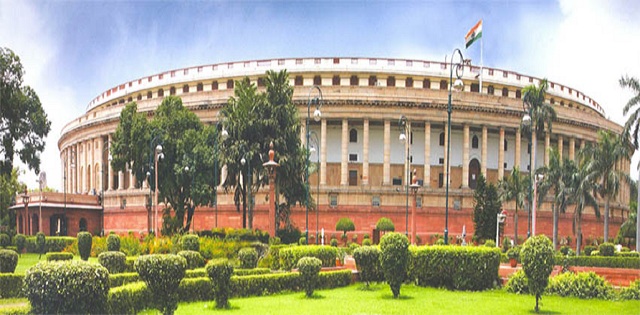The Ministry of Earth Sciences launched the National Monsoon Mission, Mission Mausam, and Deep Ocean Mission (DOM) in 2012, 2024, and 2021, respectively. Of these, DOM directly caters to the objective of promoting the blue economy in the country.
The National Monsoon Mission aims to build a working partnership between the academic and R&D organisations, both national and international, and to improve the operational monsoon forecast skill over the country and develop relevant climate applications for agriculture, hydrology, and power sectors. It also aims to develop and improve a state-of-the-art dynamical modelling framework for improving prediction skills of (a) Seasonal and Extended range predictions and (b) Short and Medium range (up to two weeks) prediction.It is planned with an overall objective to improve monsoon prediction over India on all time scales. Under this Mission, the improved accuracy and skill in seasonal prediction (for prediction of Indian SW monsoon seasonal rainfall and other parameters) and for the extended range prediction (for prediction up to the next 4 weeks in advance) have been very useful for the farmers, policymakers, the public and other end-users. Proper prediction and warning of cycloneshave helped to save the loss of lives and property in the country.
Mission Mausam is envisaged to be a multi-faceted and transformative initiative to boost India’s weather and climate-related science, research, and services. It will help to better equip stakeholders, including citizens and last-mile users, in tackling extreme weather events and the impacts of climate change. The mission’s focus will include improving the observations by augmenting various observational networks for providing highly accurate and timely weather and climate information across temporal and spatial scales, including monsoon forecasts, alerts for air quality, extreme weather events and cyclones, weather interventions for managing fog, hail, and rain, etc., capacity building and generating awareness.
DOM is a multi-ministerial, multi-disciplinary programme that aims to explore deep-sea living and non-living resources to support the blue economy and for the sustainable harnessing of ocean resources.Objectives of DOM are intended for a better understanding of the deep-sea resources thereby aiding efforts to expand the blue economy. The activities of DOM will help the components of the blue economy, such as fisheries, tourism and maritime transport, renewable energy, aquaculture, seabed resources exploration activities and marine biotechnology.The technologies developed under DOM would help explore the oceans and possibly harness non-living resources like energy, freshwater, and strategic minerals. The advisories to be developed under the mission about sea level, intensity and frequency of the storms, etc., would be useful for the societal and economic benefits of the Indian coastal regions. A better understanding of the deep sea living and non-living resources and exploration for strategic minerals like Cobalt, Nickel, Copper and Manganese are expected to pave the way for the future commercial exploitation of these resources. Ocean Thermal Energy Conversion studies are intended for offshore energy and freshwater generation.
Deep Ocean Mission (DOM) objectives are the development of deep-sea technologies that include the development of a Manned Submersible rated for 6000-metre water depth along with technologies for deep-sea mining; development of ocean climate change advisory services; exploration of deep-sea mineral resources and marine biodiversity; deep sea surveys and exploration and acquisition of a multidisciplinary research vessel; and capacity building in marine biology and deep-sea technology with setting up of an Advanced Marine Station for Ocean Biology.
As part of DOM, an extensive survey and exploration work is being carried out in the Central Indian Ocean Basin for polymetallic nodules (PMN) rich in Nickel, Cobalt, Copper, Manganese, etc. and in Central and South West Indian ridges for Polymetallic sulphides (PMS) rich in Copper, Zinc, etc. India has signed a contract with the International Sea-bed Authority for the exploration of PMN at the Central Indian Ocean Basin for an area of 75,000 sq km and PMS in Central and South West Indian ridges for an area of 10,000 sq. km.Exploring deep-oceanic resources and developing technologies for their sustainable use would not result in over-exploitation of marine resources.
Further, in 2021, the Union Cabinet approved India to sign the Biodiversity Beyond National Jurisdiction (BBNJ) Agreement or the ‘High Seas’ Treaty. BBNJ is an international treaty under the United Nations Convention on the Law of the Sea (UNCLOS), which is aimed at ensuring the conservation and sustainable utilisation of marine biological diversity in areas beyond national jurisdiction. It sets precise mechanisms for the sustainable use of marine biological diversity through international cooperation and coordination. It follows an inclusive, integrated, ecosystem-centric approach based on the precautionary principle and promotes using traditional knowledge and the best available scientific knowledge. It helps minimise impacts on the marine environment through area-based management tools and establishes rules for conducting environmental impact assessments. The Ministry of Earth Sciences will spearhead the country’s implementation of the BBNJ Agreement.
This information was given by Minister of State (Independent Charge) of the Ministry of Science & Technology and Earth Sciences, Dr. Jitendra Singh in a written reply in the Lok Sabha today.






































